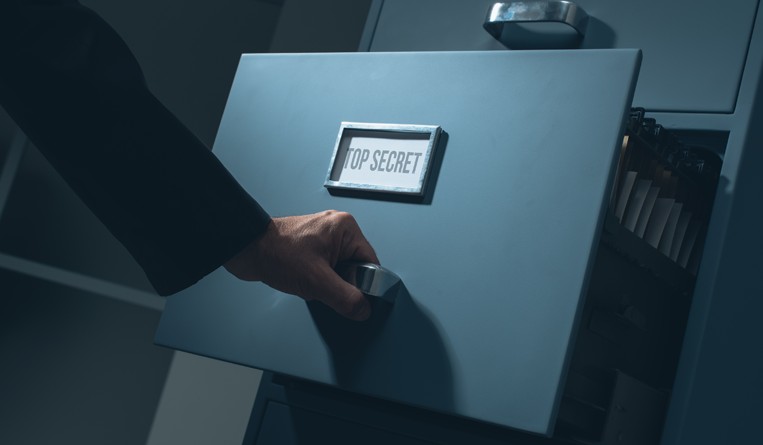Because of the uniqueness and complexity of trade secrets as an IP right, trade secret management systems have become the cornerstone of trade secret protection. Mitchell Liu shares some of the top strategies for protecting your trade secrets in China.
In China, protection for intellectual property, especially for trade secrets, has phased into a new stage. Based on empirical analysis of data from Chinese judicial decisions, we can tell that both the amount of damages and the strength of law enforcement have shown the Chinese government’s determination and actual actions taken in protecting intellectual property. According to the Wolter Kluwer database, 744 civil cases involving trade secret infringement were recorded from 2022-2024; 24.4 percent of them were decided with damages of more than Rmb500,000 (US$70,000). One specific case worth mentioning is Geely v. Weltmeister for trade secret infringement, which was decided earlier this year. In this case, the Supreme People’s Court of the People’s Public of China ordered tremendous damages of Rmb640 million (US$90 million), pushing the national record for trade secret infringement damages to a new height.
Such a trend does not only appear in individual cases; we are also seeing higher and higher damages in lawsuits involving patents and trademarks as well. According to the Report on Prosecutions involving Intellectual Property (2021-2023) by the Supreme People’s Procuratorate of the People’s Republic of China, procuratorates across the country filed, considered and prosecuted 335 trade secret infringement criminal cases involving 862 criminals. In 2023 alone, 401 persons were convicted for infringing trade secrets in criminal law cases, a 96.6 percent increase compared to 2022.
All the statistics above further testified to the Chinese government’s unprecedented strength on beating crimes involving intellectual property. For the reasons listed above, multinational corporations should pay more attention to the protection of intellectual property, particularly on the management of trade secrets, which is crucial for at least two reasons: (1) rights of trade secrets can only be acquired through proper management, and (2) management is the sole tool that fulfils the needs of right holders in protecting trade secrets against others’ infringing acts. We give more suggestions on criminal law protections of trade secrets and management of trade secrets in the following paragraphs.
In the sense of strength of protection, filing criminal law cases is often a particularly effective way to protect trade secrets. However, as we can easily tell from the data mentioned above, the success rate of filing such criminal cases is rather low. Based on multiple trade secret criminal cases handled and legal services for civil cases (including one-time IP-related affairs) provided by my team, we have produced the following key points as the fruit of professional experience:
Firstly, trade secret criminal law cases are more like puzzles compared with other cases, barring right holders from successfully filing cases with sufficient evidence. To conquer such a barrier, we suggest new legislation regarding hearings in the stage of criminal investigation and special arrangements on court jurisdiction of trade secret cases.
The very dominant reason trade secret criminal cases can hardly survive the criminal investigation stage is the complexity of fact patterns and technical issues that requires expertise to understand. These issues, on one hand, can quickly become bumps in crime investigation stages; on the other hand, they can give the suspects convenience to exhibit questionable evidence and claim made-up defending opinions to the procuratorates and judicial courts, distracting these judicial authorities from focusing on single investigation directions. Such reality called my team to urge hearings to be introduced to criminal investigation stages. The hearings can guide investigation forces to find the key points and directions, greatly facilitating fact-finding in criminal investigation stages.
Based on the cases my team is working on, investigation forces have been inclined to institute some form of evidence exchange and discussion after evidence collection in day-to-day criminal investigations. Not only does this change make the filing of trade secret criminal cases easier (though only to a certain extent), it also matches with the earlier statements and advocacies by my team.
One more important point concerns the authority who determines whether particular trade secret criminal law cases can be filed at the public security bureaus. Considering that district or village public security bureaus can be short on police officers, we suggest more experienced, higher-level provincial and city public security bureaus to take over the job of examining the filings. An adjustment like this would help the criteria for trade secret criminal law cases stay steady, alleviate the workload of local-level public security bureaus and, most importantly, allow more qualified trade secret cases to be filed with no delay. We are glad see that some of the provinces and cities have responded to our suggestion; cases to be filed in Shanghai are considered in the Shanghai City Public Security Bureau, while cases to be filed in Jiangsu are now considered in the Jiangsu Province Public Security Department. Such “level-uping” is not limited to criminal investigations; trade secret criminal cases are now tried in higher-level procuratorate and judicial courts.
Secondly, in trade secret cases, the contribution rate and calculation of damages in the following stages must be considered upfront, along with the selection and combinations of trade secret contents.
Tracing the application of the contribution rate, we find its origin in patent law, which means it is a transplanted concept for damages calculation in trade secrets. My team believes that application of the contribution rate and related concepts in trade secret cases (especially the ones involving criminal law) needs careful consideration because trade secrets are usually core technologies; access to the secrets is the prerequisite of being able to manufacture the actual products. Meanwhile, because patents are more about benefits that come along with the actual patent rights, the contributions by other rights should be proportionally deducted.
My team is of the opinion that, in case the trade secrets infringed are core technologies of the products in dispute, i.e., manufacturing cannot start without such trade secrets, damages of right holders should include the profits of the whole product or solution, instead of only a piece of the contribution rate. For this reason, when asserting trade secrets, right holders shall pay more attention to summarizing, selecting and combining the technical information. On top of that, concrete analysis of the effects and severability of technical information included by the product as a whole can give right holders bigger edge in damage calculation.
Thirdly, trade secret disputes often emerge from unfair competition practices by core employees who disregard non-disclosure agreements; corporations should also be aware of trades secret infringement in both directions in mergers and acquisitions and in cooperative research and development, as slight negligence might evolve into significant problems for the corporation.
Take one trade secret criminal case my team handled as an example. General manager S of company X was accused of infringing company D’s trade secrets, and thus was temporarily detained by the economic crime investigation force of the public security bureau. The complexity of this case lies among mergers, technology as capital and multiple transfers of the technologies. The merger happened long before the criminal case begins; the new owner of company X did not know anything about the infringing acts, but was still involved in the criminal disputes. Detention of general manager S (who is the head of the company’s engineering department) directly caused at least Rmb 500,000 (US$70,000) of loss to company X. Investing technology as capital happened before general manger S joined company X, but during his time in the other company, which accepted the investment from company D. Multiple transfers actually referred to the transfer from company D, via company D’s subsidiary, to company X. In the sense of trade secrets, the difference between company D’s trade secrets and company X’s updated technology determines the rate of profit. Although my team finally freed the general manager from detention by earning a non-prosecuting order from the procuratorate, this case still caused the client inestimable loss.
Another trade secret criminal case we handled is even more bizarre. Company A entrusted company B to develop and manufacture a new type of steel pipe, and they agreed that both companies jointly own the intellectual property generated, while company B was not allowed to sell the same product to third parties. However, just over two years later, the chief technology officer of company B was arrested by police in Jiangsu (where company A resided) for infringing trade secrets in criminal law. My investigation revealed that company B designed similar products based on various clients’ needs after it contracted with company A; company A received such information through public channels and believed such behavior counted as trade secret infringement. With this intelligence, company A went to the police with their accusation of company B. Even though the papers published by technical personnel from both companies disclosed information in dispute and subsequently disproved that the trade secrets in dispute were not known by the public, and we finally managed to help our client company B to prevail in this case, the loss of the company and its technical personnel remained irrevocable.
From this case, we can assure you that the land mines of trade secrets can be everywhere in mergers and acquisitions, cooperation involving research and development, and inter-firm flow of employees.
Because of the uniqueness and complexity of trade secrets as an IP right, trade secret management systems for corporations have become the cornerstone of trade secret protection. We see the most challenging aspect of trade secret management system implementation is not about implementing the system, but its day-to-day use and effectiveness.
While it is easy to come up with a pile of rules and papers, actual running of such a system requires much more effort. For example, when it comes to design of trade secret management systems, the conventional approach is to require corporations to classify trade secrets in advance and manage the classified information accordingly. However, for individual corporations, it is almost impossible for every actual person in charge to classify every piece of information generated in daily operation, not to mention reclassifying the classified information (or what to do in case of reclassification), because simple classification alone will need too much time and efforts for individual employees (including those who are in charge of heavy duties) to work out their own moves (think: can they always be correct?). Trade secret management systems like this significantly drags day-to-day operations of corporations, and it will only be a matter of time for such management system to be abandoned by the employees de facto.
My team suggests an all-new methodology to implement trade secret management systems: a bottom-to-top method, based on our experience in the implementation of management systems, IP litigation and non-litigation cases. This methodology starts with every single move the employees will make every day, integrates legal rules and regulations on the way, and finally meets the needs to assert rights and manage risks. The advantages are obvious: it works, and it is not burdensome. In actual implementation of the management and classification system mentioned above, we firstly consider daily operation needs according to the requirement of authority management, then summarize classification criteria based on the performance of the system in daily operation, and finally adjust other management measures in accordance with classifications. Implementing trade secret management systems from the bottom of the daily operation to the top of directors’ aims reframes the traditional way of thinking in terms of trade secret management systems and enabled the daily management of trade secrets. We believe our implementation of trade secret management systems truly takes care of all aspects of trade secrets.
Trade secret protection is both judicial authorities’ responsibility and cooperations’ inner need. Corporations shall fundamentally re-recognize the necessity of having a trade secret management system: a trade secret management system is not only about a set of files, or a kind of operation system; directors of the firm need to realize that their corporation’s survival depends on trade secrets, and every employee should have the concept of trade secrets in mind. My team has accumulated a lot of experience on trade secret cases from more than 20 years of practice in trade secret protection. We hope to contribute to the protection of trade secrets, along with all the readers, so that fair competition can be promoted and genuine innovation can be encouraged.




-preview.jpg)




